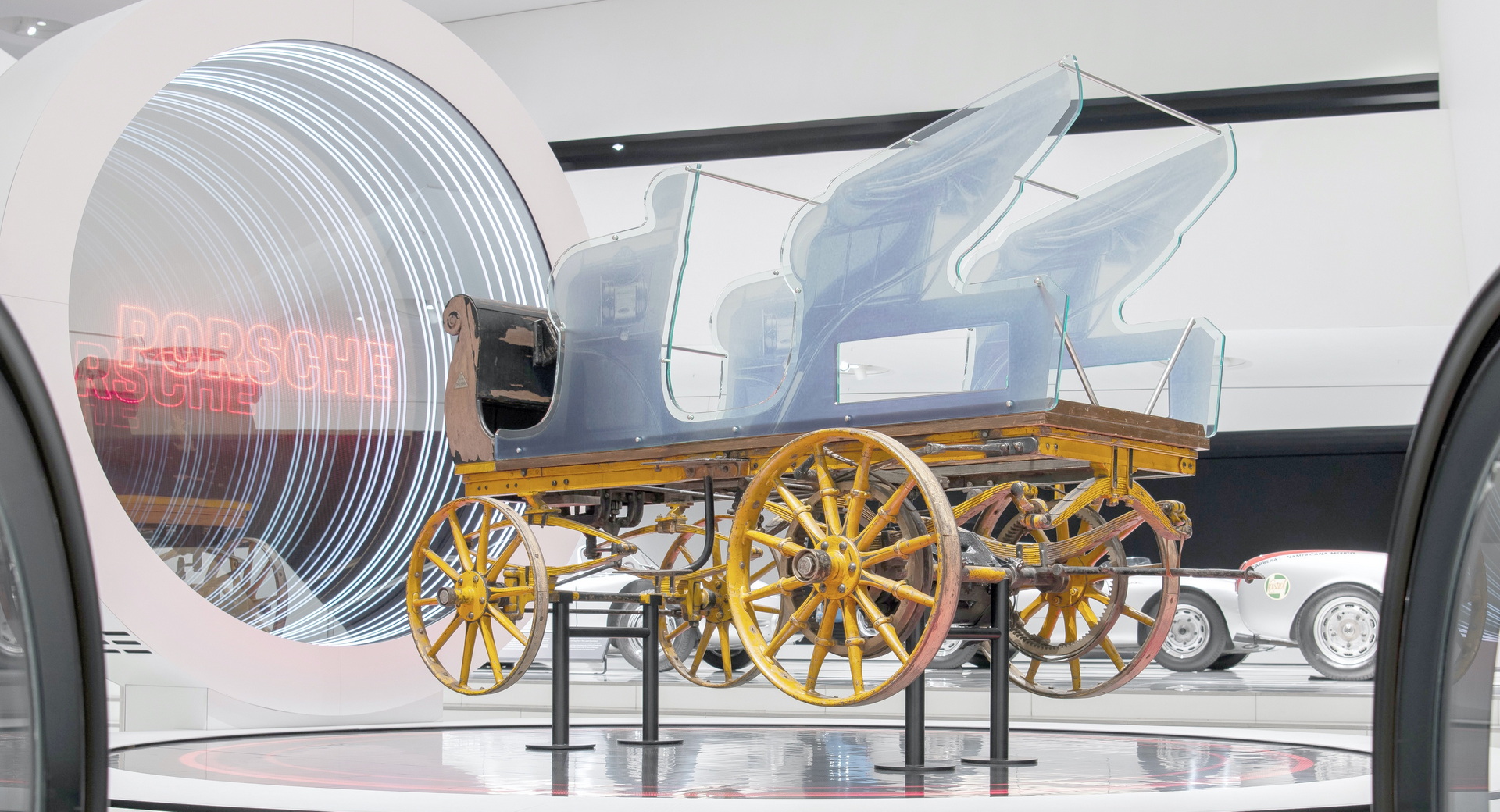
The name Porsche elicits certain ideas, a sports car with a flat engine installed behind the rear wheels being chief among them. But the latest installation in the automaker’s museum possesses none of those qualities. It is, instead, a mid-motor electric vehicle from 1898.
Now put pride of place, the Egger-Lohner C.2 Phaeton (also called the Porsche P1) is the oldest surviving vehicle that Ferdinand Porsche ever worked on and is placed right at the entrance to the Porsche Museum as part of a permanent exhibition.
The setup took more than a year of planning and preparation to execute and Porsche calls it “one of the most important vehicles in the company’s collection.” Powered by the “Octagon,” an electric motor that Ferdinand Porsche developed, the motor was mounted ahead of the rear axle and the front wheels steered it. That makes it a surprisingly modern vehicle, in many ways, despite being a horseless carriage that drove around the streets of Vienna 123 years ago, back when it was still part of the Austro-Hungarian Empire.
Read Also: Porsche Unearths and Restores First Car Built by its Founder, the 1898 P1 EV
[embedded content]
The motor took its name from its eight-sided shape and provided the carriage with 2.9 hp (2.99 PS/2.2 kW). That was enough to get it up to a speed of 22 mph (35 km/h) and Tudor batteries gave it a range of around 49 miles (79 km).
Considered an important stepping stone in the career of the legendary engineer, the model’s drivetrain makes it particularly relevant to the modern automotive industry. As such, Porsche has installed it in front of an infinity mirror to make it look like it’s “traveling from the past into the present.”
A series of mirrors and LED rings give it the appearance of traveling through a portal that, in combination with a cosmic soundtrack, helps tell “the story of Porsche’s DNA.”
“Many visitors have never associated the horseless carriage with electric mobility,” says curator Iris Haker, explaining the upgrade. “Now we’ve created a real wow effect. Every visitor is drawn into Porsche’s electric beginnings thanks to ‘infinity mirror’ technology that has never been used before.”
Able to be seen from almost every corner of the Porsche Museum, the installation is said to be getting the attention it richly deserves.

